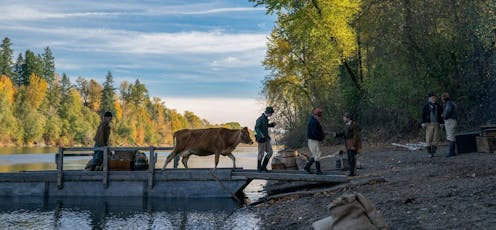In modern cinema, directors are once again feeling the pull of the Westerns of yesteryear, proof that this mythical vision of the American epic still lives on. The Dead Don’t Hurt , starring Viggo Mortesen, is one of the latest examples, while Kevin Costner has also breathed new life into the genre in Horizon: An American Saga . The Western has risen from the ashes of disinterest in the early 21st century, and as with all revivals, there are aspects of the tradition that endure while others are reassessed.
On the one hand, this phenomenon of re-appropriating the Western is a clear, intentional aesthetic choice: stagecoaches, wagons, ramshackle towns, ranches, tumbleweeds, saloons, stables and deserts are still mainstays of this cinematic world. It was in these spaces that the first Westerns told the tales of heroism that would come to to define “American” identity. At the same time, American war films have often aimed for something similar, albeit in a more tragic vein – once the conquest of the West was complete, these same people and values would go out to assume the role of “sheriff” on a global scale.

The parallels are striking: heroes risk their lives on the frontiers of ideology and religion to defend the Law against rogue agents, presenting democracy and freedom as the only political bulwark against the power of the strongest, in a more tarnished and critical interpretation of the Western vision. While not everything can be boiled down to a handful of roman.
















